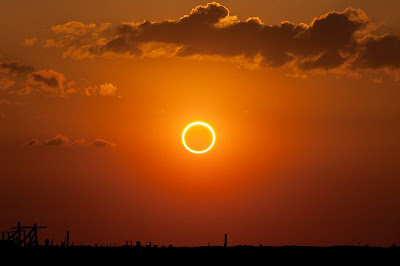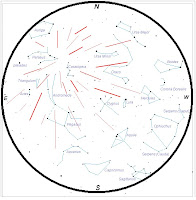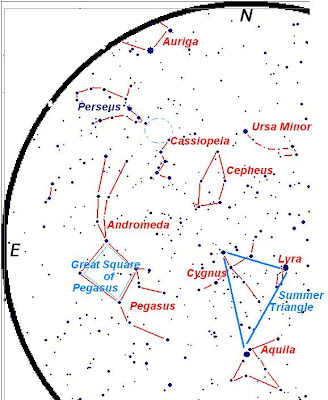I) Safety Notes
II) Mercury crossing the Sun
III) Some thoughts on How I Feel About This (feel free to skip)
IV Final Notes
I)
.....First, before I get into anything else, NEVER EVER EVER LOOK DIRECTLY AT THE SUN! Okay, fine, if one is looking at the Sun at sunrise or sunset, it is much safer for reasons that I'll go into, but I don't want that to weaken the gist of LOOKING AT THE SUN IS DANGEROUS, ESPECIALLY IF ONE WERE SELF-DESTRUCTIVE ENOUGH TO USE BINOCULARS OR A TELESCOPE (without a filter).
.....Before going on, let's go through why (I am never going to say "do / don't do a thing without explaining why), and it has to do with quantum mechanics.
.....No! Don't leave! Please!
....."Quantum" means, "one, one piece" and in this case it means "one interaction at a time." Light is a way (the way, actually) of transmitting energy through vacuum, and quantum mechanics has us treat light as a single piece of energy. (Let's call this piece a "photon".) Energy, of course, can do things, and enough energy in the wrong place can do things like kicking the electrons of an atom around, or breaking apart molecules, or even breaking apart atoms. However, light can't "team up". If a certain amount of energy is required to break a link between atoms, then a whole bunch of lower-energy photons will do nothing to it, and will in fact be entirely ignored. If something is going to happen, then it has to happen all at once, with all of the energy contained in one photon. This is why high-energy photons (ultraviolet light, gamma rays, X-rays) can be dangerous and are to be avoided, while low-energy photons (red light, infrared light, radio waves) have so small an effect that one an use a red light to read in the dark, without the light breaking up the molecules your eye constantly makes allowing for low-light vision.
.....Also, the hotter an object is, the more energetic the types of light the object is giving off in number. Your stove is never going to be a dangerous gamma rays source. If you Hulk out while cooking, I'm afraid that's on you. The Sun however, being around 10,000 F, is giving off a lot of UV light, so staring at the Sun is giving a chance for these little jerks to get into your eyes and kick things around.
 |
| Dangerous and harmful. Also shown: unjustifiably risky action |
.....Does this mean that you can't see the shadow of Mercury moving across the Sun? You sill have options! If you have specially made eclipse glasses (something made explicitly to protect against UV light), you might be able to see the dot of Mercury across the Sun. (If you can't do NOT use binoculars on the outside of the filters!)
....But there is an easy way! If you have a pair of binoculars (or a telescope), then (NOT LOOKING IN THE ACTUAL TELESCOPE OR BINOCULARS) hold the binoculars so that the image falls on a piece of paper or cardboard. In this way, none of the UV light will enter your helpless and currently irreplaceable eyes.
II)
.....Mercury orbits more closely to the Sun than the Earth does, cycling in 88 days as opposed to our 365-day trip, so that means that each 116 days (Do you want to see the math? 'Cause I'll show you.) Mercury passes the Earth in their orbits. Even with that, it is a very rare event for the disk of Mercury to pass in front of the Sun This is because Mercury's orbit is tilted by seven degrees to the Earth's orbit, and the Sun is only half a degree across against the sky, so most time Mercury passes above or below the Sun.
.....The picture below shows the path of the transit, though sadly in Eastern Standard Time (subtract one hour, of course, for Central Time). Mercury will take several hours to move across the Sun, so hopefully eberyone will get a chance to see it! I know that I hope to have my telescope out until I have to go to work at about 10:00 AM.
 |
| image from NASA |
III)
.....I am embarrassed by being caught by surprise like this. Observational astronomy has always been one of the most enjoyable aspects of my life, and getting taken by surprise like this kinda illustrates how my horizons have collapsed into day-to-day concerns as I don't have the professional goals that I once had. I promise to try and stay ahead of these things to keep the good connections between me and past-me.
IV)
RE-READ SECTION ONE!

























.svg.png)
